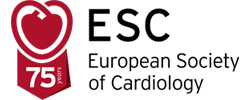Introduction
Advocacy is an integral part of the nurses and allied professionals' (AP) role. Whether it is championing patients’ voices,1 or standing up for their profession,2 advocacy has always been something we have practiced, even if we have not realised it, nor shouted very loudly about it. Indeed, it could be argued that most advocacy performed by nurses and APs, whilst hugely impactful for the people directly involved, is quietly performed and generally goes unacknowledged3.The Association of Cardiovascular Nursing and Allied Professions (ACNAP) Advocacy Committee wants to change this; this short report sets out what the committee has been doing to make our (and your) voice heard within the sphere of cardiovascular disease.
ACNAP Advocacy Committee: who and what
The current committee and past committees were tasked with the mandate to ‘create a united healthcare professional and patient voice to improve cardiovascular health, through education, advocacy and research’.4 Comprised of both patients and healthcare professionals, from diverse settings across Europe, the committee has an ambitious agenda to raise awareness of advocacy, build advocacy capacity and capability and work collaboratively with key stakeholders both within the European Society of Cardiology and beyond.
Raising awareness of advocacy
To raise awareness, committee members teamed up with committee alumni to set out the case for advocacy in cardiovascular diseases in an editorial in this journal.5 In this piece we presented a definition of advocacy, outlined the categories, domains and activities of advocacy; and sought to raise awareness of the extent and possibilities of advocacy for nurses and allied professionals. Committee members have supplemented this work with publications that raise awareness of important advocacy initiatives, such as the announcement of advocacy priorities in CVD and diabetes by the Global Heart Hub.6 Other endeavours we have highlighted include important initiatives like those at the European Journal of Cardiovascular Nursing (EJCN), which seek to enhance the communication of research findings in an informative yet accessible format.7
Building advocacy capacity and capability
In order to build capacity and capability, it is necessary to first understand how nurses and allied professionals conceptualise advocacy and what they perceive to be the key barriers. To this end, during the 2023 annual ACNAP Congress, the ACNAP Advocacy Committee conducted an online survey exploring key questions around advocacy. 54 delegates participated in the survey, which was informed by extant research and the committee’s expertise. Prior to circulation at the event, the questionnaire was piloted for readability and acceptability.
Importantly, this survey revealed that nurses and allied professionals' perception of advocacy, is aligned with our definition of advocacy as a multi-domain, multi-level concept. Secondly, it highlighted the significant barriers to implementation that we need to address, such as the negative ‘troublemaker’ label and moral distress that may accompany advocacy actions. Lastly, it demonstrated important training gaps that this committee has began to, and will continue to, address. For results in detail, please see Figure 1 below. The current committee plans to build on this work by conducting a systematic review of the literature to build an in-depth picture and comprehensive overview of advocacy definition, conceptualisation, barriers, facilitators and actions.
Figure 1:



Delivering an advocacy agenda
Key to delivering our agenda is communication. Members of the committee have spoken at conferences, 8 participated in the development of guidelines,9 and even lobbied the European Parliament for a pan-European CVD strategy.10 In addition to leading by example, we are endeavouring to equip others with the skills to enhance their advocacy activities by sharing the so called ‘soft skills’ that we have found to be important. Our committee developed our ‘Top 10 tips for advocacy’;11 which neatly summarises how you, as healthcare practitioners, can optimise the success and impact of your advocacy efforts. In this mandate the committee will focus on ‘advocacy in the real work’. As part of this work we will identify and interview leading nurse, allied professionals and patient advocates and hear about their journeys in their own words. We will also host an ACNAP Talk ‘Taking the mystery out of CV Health Advocacy’ on 12 May 2025.
A call to arms
This overview of activities is our call to arms. We want nurses and allied professionals to become active advocates and engage with, or contribute to, our programme of work. Now that we have illuminated the key challenges and barriers, it is time we work together to deliver the cultural change needed to ensure nurse and allied professional advocacy voices are less of a Miaow and more of a Roar.12

Authors
Advocacy Committee Members 2022-2024 & 2024-2026:
- Faye Forsyth
- Irene Gibson
- Hywel Jones
- Eleni Kletsiou
- Gerry Lee
- Jessica Orchard
- Panoraia Rammou
- Rita Rodrigues
- Juan Carlos Quijano-Campos
- Mary Harrison
- Sara Tavares


 Our mission: To reduce the burden of cardiovascular disease.
Our mission: To reduce the burden of cardiovascular disease.